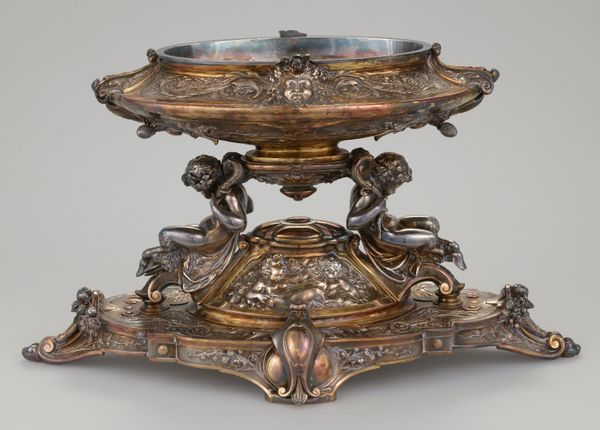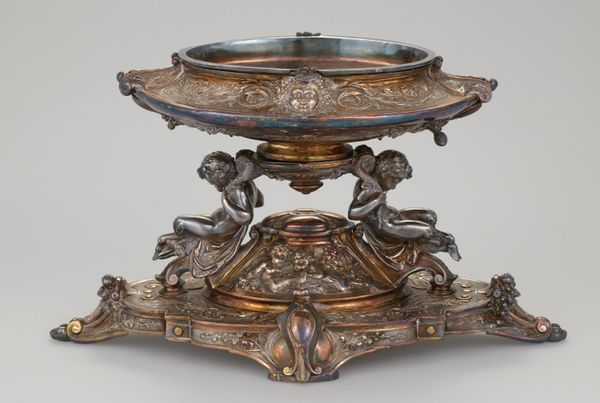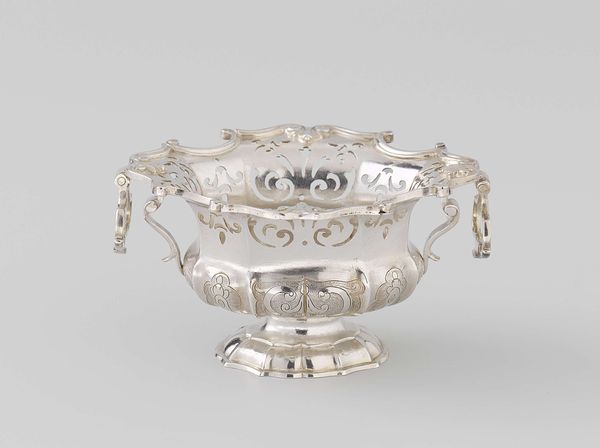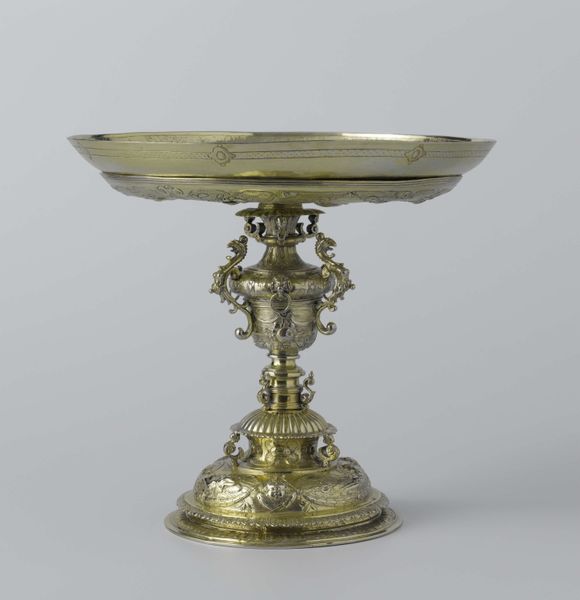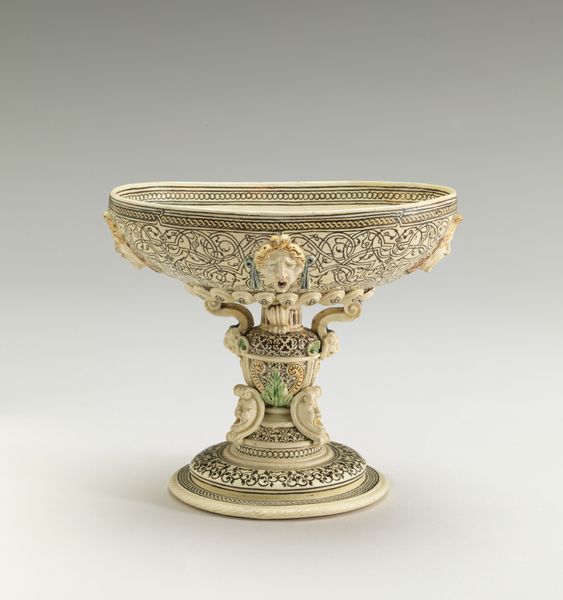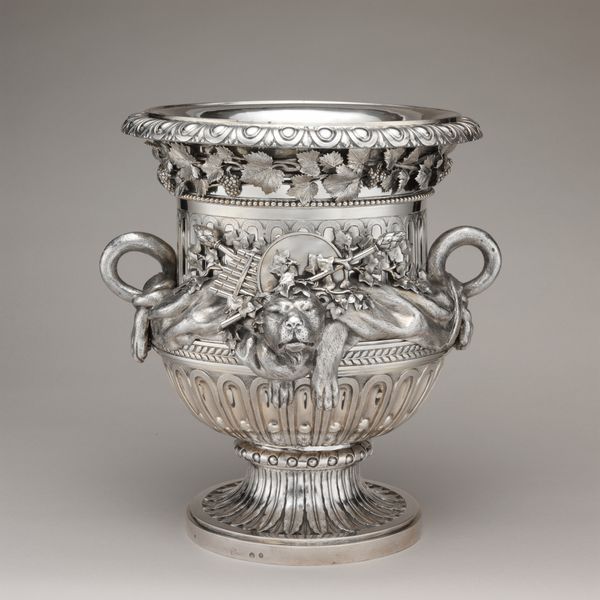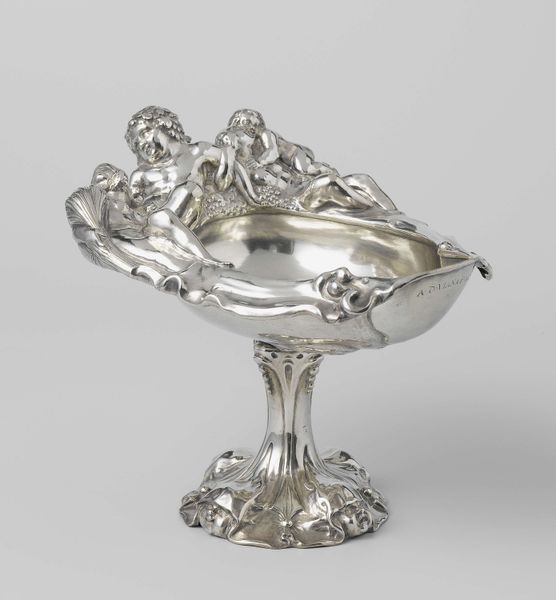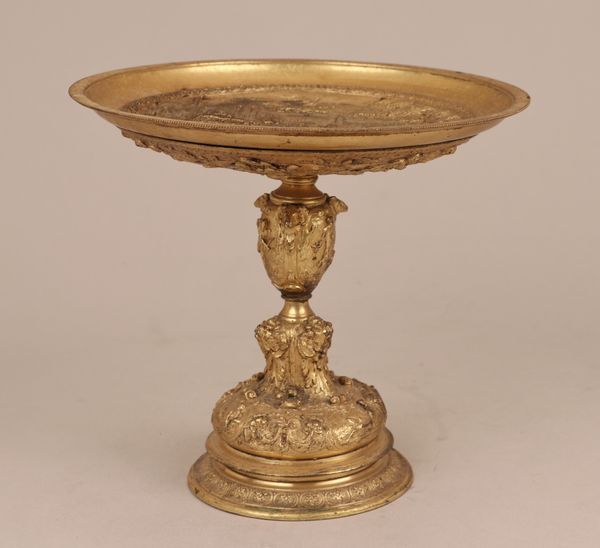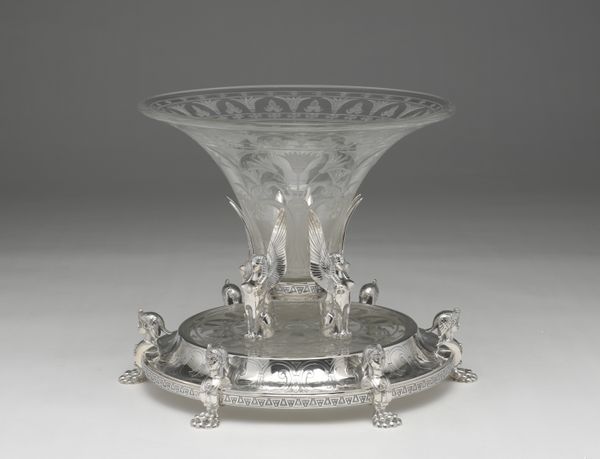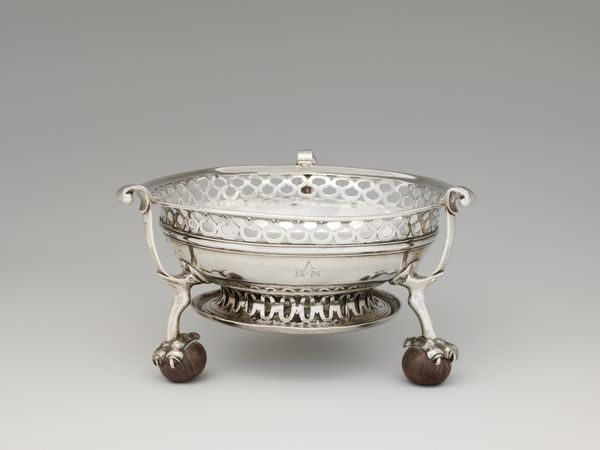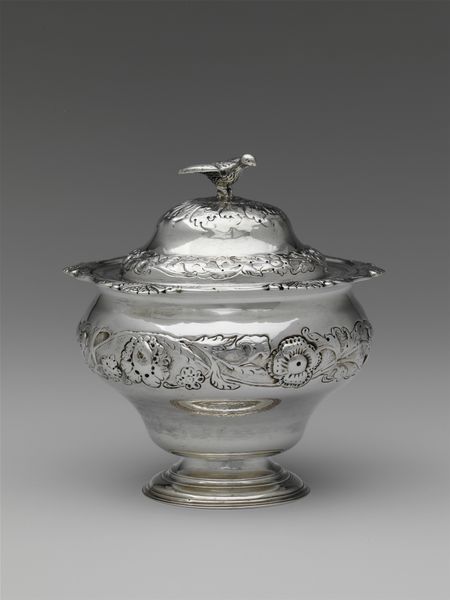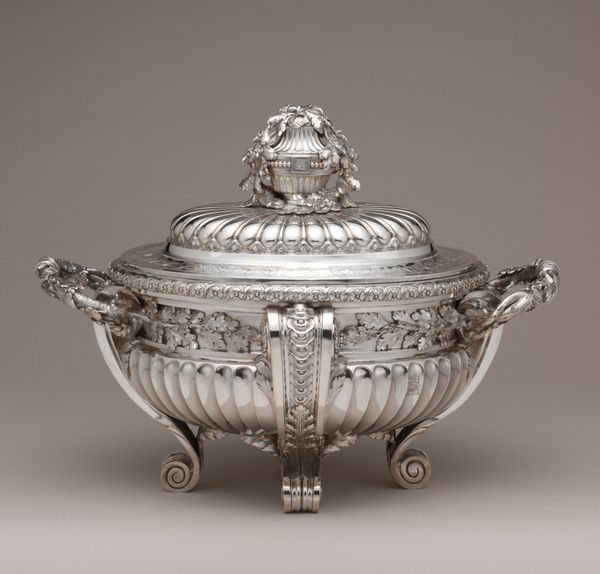
Bowl and stand from the -Summer- centerpiece c. 1864
0:00
0:00
mixed-media, metal, glass, sculpture
#
mixed-media
#
neoclassicism
#
metal
#
sculpture
#
figuration
#
glass
#
sculpture
#
decorative-art
Copyright: Public Domain
Editor: This is the "Bowl and stand from the -Summer- centerpiece" made around 1864 by Léonard Morel Ladeuil. It's a mix of metal and glass. The figures supporting the bowl give it a grand feeling, but I’m curious about the choice of classical figures. What's your interpretation? Curator: Considering its historical moment, we see this piece emerged during a period of intense industrialization and social stratification in Europe. The choice of neoclassical figures wasn't just aesthetic. It invoked a mythologized past of virtue and harmony as a subtle commentary on, or perhaps an escape from, the tumultuous changes happening in the 19th century. How might the display of luxury items like this impact different classes? Editor: It does seem like the artist is pointing out an uneven distribution of wealth, like, who gets to use the artwork. Can we explore further how the themes represented in the artwork can be viewed through the lenses of gender and politics? Curator: Absolutely. Think about the idealized bodies of the supporting figures, likely based on male figures from ancient Greek art. Are they representations of a hegemonic masculinity upholding this entire structure, this wealth, this *idea* of a perfect society, while conveniently ignoring the labour and social inequalities that sustained it? What kind of role is assigned to women within such narratives? Editor: So, it’s less about pure beauty and more about understanding the power dynamics at play at that time. It sounds like luxury goods during this time become almost an act of enforcing existing social classes, and upholding an oppressive system! Curator: Precisely. Art, even decorative art, is never created in a vacuum. By exploring the social, historical and political context, we understand not only the object, but the narratives it subtly reinforces and the power structures it supports. Editor: Wow, it definitely changes my perception. Now I see it as more than just a bowl; it’s a statement—a complex one. Thank you for pointing me in that direction. Curator: It was my pleasure. Questioning the narratives we inherit is always a good start in truly seeing the artwork for what it represents in that socio-historical context.
Comments
No comments
Be the first to comment and join the conversation on the ultimate creative platform.
